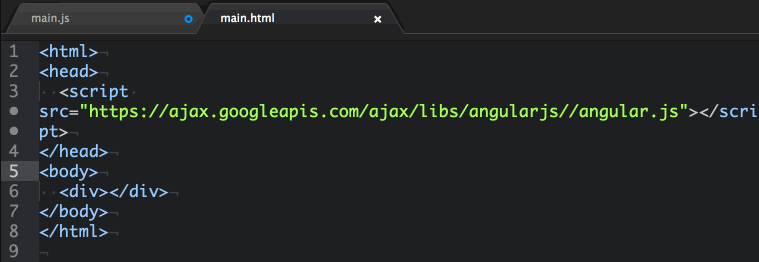Installing Atom from GitHub on Ubuntu, openSUSE and Windows. Short review

Yesterday the assembly of the Atom editor from GitHub for Windows was released, before it was available only for Mac OS.
And the installation for * nix systems is described in the official project repository .
Here I will tell how we installed it for the following OS, in descending order of complexity:
- Windows 7
- Ubuntu 14.04
- OpenSUSE 13.1
As well as first impressions of its use.
Immediately make a reservation, for Windows and Ubuntu installation is a couple of steps. For openSUSE, a little more.
Attention traffic - pictures.
Windows 7
Windows 8 support is also announced, but unfortunately (or fortunately?) It is not used in our team, but I think it will work.
- We download archive from a site or from repzitoriya
- Unpacking
- Run atom.exe
- We work
')
Ubuntu
We installed on Ubuntu 14.04, recommended not lower than 12.04
In search of a simple way, we google a resource on which there is already a PPA ( personal package archive ) compiled for Ubuntu.
To install, run the terminal and execute the following code:
sudo add-apt-repository ppa:webupd8team/atom sudo apt-get update sudo apt-get install atom A note from the site - PPA is available for Ubuntu 14.10, 14.04, 13.10 and 12.04. Ubuntu 12.10 and 13.04 are no longer supported by Canonical.
Our note - we put on only installed Ubuntu and OpenSUSE
OpenSUSE
Here we decided to follow the instructions and used another article.
Step by step commands and actions in the console with a description:
- Preparing to install. Install the packages: make, gcc, gcc-c ++, glibc-devel, and libgnome-keyring-devel, git via the console enter:
sudo zypper install make gcc gcc-c++ glibc-devel libgnome-keyring-devel git - Installing Node.JS in the console:
sudo zypper addrepo http://download.opensuse.org/repositories/devel:languages:nodejs/openSUSE_Tumbleweed/devel:languages:nodejs.repo sudo zypper refresh sudo zypper install nodejs - Next, use Python 2 for the npm package installer:
sudo npm config set python /usr/bin/python2 -g git: sudo zypper install git - Create a folder for installation and go to it.
We clone Atom to ourselves.
Go to the folder with the Atom.mkdir ~/src && cd ~/src git clone https://github.com/atom/atom cd ~/src/atom - Build, install and create an Atom shortcut using VIM
sudo npm config set python /usr/bin/python2 -g script/build sudo script/grunt install vim /usr/share/applications/atom.desktop - We write to Vim
[Desktop Entry] Type=Application Encoding=UTF-8 Name=Atom Comment=Atom editor by GitHub Exec=/usr/local/bin/atom Icon=/home/cg/.atom/atom.png Terminal=false
press ESC, enter: wq and copy the image iconcp ~/src/atom/resources/atom.png ~/.atom
First start
"Welcome screen of the atom"

"Theme setting"

What is called - two news:
1. From pleasant - when starting, there is no dialogue about the license agreement, and the hand does not reach for a tablet of greed - to test the full-featured version.
2. By default, Atom sends the following anonymous statistics:
- A unique identifier generated from the MAC address of the developer’s machine;
- The width and height of the screen;
- Atom version used;
- What tabs are open;
- Different speed characteristics (start time, load time, etc.).
This is disabled in the menu Packages -> Settings View -> Uninstall Packages in the filter, select Metrics
"Turn off metrics"

"Installing AngularJS plugin."

“After installation (original image and plugin description atom.io/packages/angularjs )”

"Workspace"

Atom uses the chromium engine so debugging of the environment itself is available. View-> Developer-> Togle Developer Tols or Alt + Ctrl + I
“Running Debugger”

It is also stated that performance is the main priority of the Atom development team, so it is possible to use the Facebook React engine as the fastest, in their opinion. What is used now - I do not know. In the near future, they promise to make React the default engine.
"Use React Editor Button"

Image taken from the Atom blog.
Differences and comparisons with other IDEs (in which we worked):
- Free of charge is a conditional advantage, for example, if you study or teach in a technical university, technical school, or work in an opensource project, many large manufacturers have academic programs and discounts. For example, JetBrains IDEA , Microsoft DreamSpark, InterSystems Caché campus and many others. True, Sublime mentioned in the comments has no discounts (Educational discounts are not presently offered);
- The power of the community - since the release of the Windows version until the release of this post, about a day has passed, and there were more than fifty committees in the project, given that the work has been going on for more than two years; the dynamics are pleasing;
- Community speed - for example, the AngularJS plugin from Angular-UI developers came out a few days after the first Atom announcement;
- At the forefront of progress - auto-update, from the point of view that you will always work in the IDE that supports the latest technology. For example, Atom itself uses Flex ;
- The power of corporations - the project uses engines from Google and Facebook, and it inspires hope that the time spent on the study and subsequent use will not be wasted;
- Immediately portable - convenient for Windows, unpacked, launched and deleted without a trace and problems, if not liked;
- You can edit the modules within the editor itself, as in Sublime, below the screen with an example.
Pro performance can not say anything intelligible. Subjectively:
- On all the machines of our team, it starts up quickly, there are no i3 processors to the word “cooler”;
- It takes in memory more than 100 megabytes at startup, for comparison, Sublime ~ 30 and WebStorm are several hundred.
Made "your" package by copying and renaming the pre-installed ZEN

References:
Source: https://habr.com/ru/post/205994/
All Articles